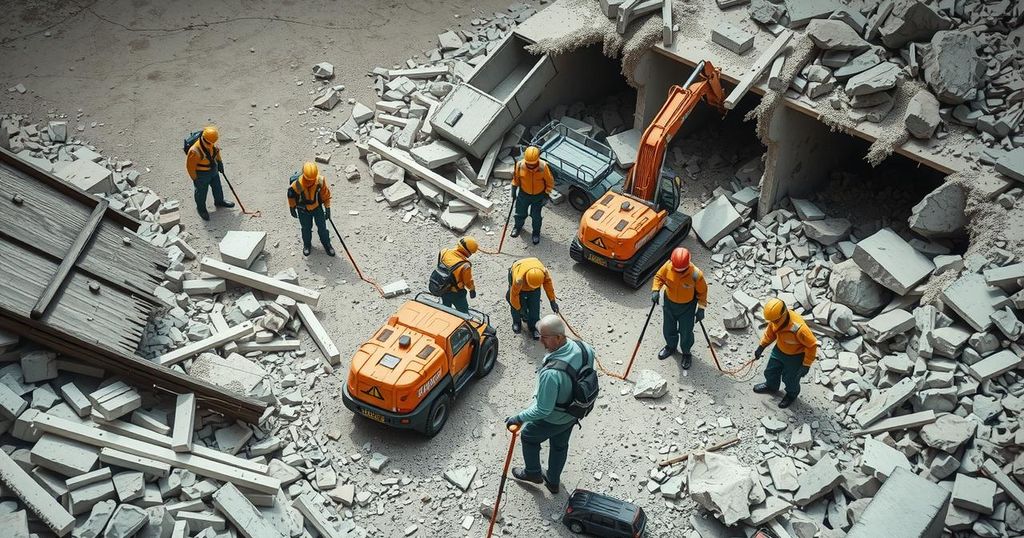Myanmar Earthquake: Death Toll Rises as Hope Flickers Amidst Relief Efforts

A powerful earthquake has struck Myanmar, predicted to exceed 3,000 deaths as rescue operations continue with some successes. The U.N. warns of worsening humanitarian conditions, with critical shortages of basics. Domestic conflict complicates aid delivery efforts, with the military government expressing a willingness to accept international assistance, although uncertainties remain.
Rescue efforts continue in Myanmar following a devastating earthquake that has already resulted in over 2,000 fatalities, with fatalities expected to rise above 3,000. General Min Aung Hlaing, head of the ruling military junta, confirmed that at least 441 individuals are still unaccounted for. The U.N. reports that the chances of finding survivors are diminishing, compounding the ongoing humanitarian crisis exacerbated by civil war conditions in the region.
UN humanitarian officials have expressed urgency, highlighting severe shortages of shelter, clean water, and medical supplies. Many displaced individuals have spent nights outdoors due to infrastructure failures, lacking basic necessities amid the ongoing crisis. Both UNICEF and OCHA note that urgent action is required to assist affected families, citing that the need for aid escalates continually.
The World Health Organization reported damage to over 10,000 structures from the earthquake, which also affected neighboring Thailand. In Bangkok, a construction site incident led to tragic collapses, obstructing rescue efforts and raising questions about the site’s construction integrity. Investigations are currently underway to identify potential causes of the collapse, which left many workers missing.
Remarkably, amidst the devastation, rescue operations yielded hopeful outcomes, such as the successful extraction of a 63-year-old woman from the rubble after 91 hours trapped. Authorities have reported 403 rescues in Mandalay, though they signify both loss and urgent ongoing risk, including multiple casualties among those trapped during the earthquake.
International humanitarian response is gradually building, with teams arriving from various countries to aid rescue efforts. Notably, teams from China reported successful rescues, including a young child and a pregnant woman. However, essential heavy equipment remains in short supply, impacting the speed of ongoing rescue operations.
Humanitarian needs extend beyond immediate rescues. U.N. officials are sounding alarms over potential disease outbreaks due to inadequate water and sanitation, risking a choleral crisis. Many individuals already lacked basic medical care before the earthquake, and the destruction of existing facilities has intensified these concerns.
Prior to the earthquake, three million individuals were displaced due to the ongoing civil conflict, with nearly 20 million in need of assistance. The military’s control has waned since their 2021 coup, complicating relief efforts. The opposition National Unity Government (NUG) declared a ceasefire to allow for humanitarian aid delivery while calling for vigilance against any military obstruction of assistance.
Currently, there is uncertainty about the military’s role in hindering aid delivery. However, General Hlaing declared openness to accepting international assistance post-disaster, indicating potential changes in the military’s approach to foreign aid, unlike the past where such aid was often restricted.
The earthquake in Myanmar has triggered a severe humanitarian crisis, with the death toll expected to surpass 3,000 and ongoing rescue operations revealing both tragedies and moments of hope. Amid critical shortages and the looming threat of disease, international aid is being mobilized, but uncertainties remain regarding military cooperation in humanitarian efforts. The situation underscores the urgent need for coordinated support and immediate relief to save lives while addressing the broader implications of the ongoing civil conflict.
Original Source: www.cbsnews.com






